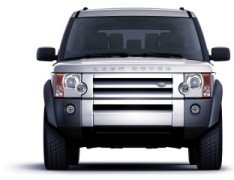Difference between revisions of "Exhaust Gas Recirculation"
(New page: '''EGR Valves'' - What do they look like ? ridgeback_moor has compiled a very helpful pictorial on what excatly thses things that are often blamed , sometimes incorrectly, for a myriad of ...) |
|||
| (2 intermediate revisions by the same user not shown) | |||
| Line 1: | Line 1: | ||
| − | '''EGR Valves | + | '''EGR Valves - What do they look like ?''' |
| + | |||
| + | ridgeback_moor has compiled a very helpful pictorial on what exactly these things are & what are blamed , sometimes incorrectly, for a myriad of woes . | ||
ridgeback_moor wrote "I've got hold of a couple of old TDV6 EGR valves (thanks to Disco_Mikey) to strip down and work out what goes wrong with them, and thought some of you might find pictures interesting. There's plenty of discussion on here about EGRs failing, so these pictures might help to illustrate exactly what it is that is being talked about :)" | ridgeback_moor wrote "I've got hold of a couple of old TDV6 EGR valves (thanks to Disco_Mikey) to strip down and work out what goes wrong with them, and thought some of you might find pictures interesting. There's plenty of discussion on here about EGRs failing, so these pictures might help to illustrate exactly what it is that is being talked about :)" | ||
| Line 41: | Line 43: | ||
http://www.disco3.co.uk/gallery/albums/userpics/14033/DSC02903.JPG | http://www.disco3.co.uk/gallery/albums/userpics/14033/DSC02903.JPG | ||
| − | Although both of these valves had some carbon build up around the valve ports it doesn't look like that is the reason for failure - the spindle moves freely and the valve seals well on the seat. I don't know the mileage that these had covered, but it would seem the weak point in the design is the actuator/motor which can corrode, and the valve guide rollers which collapse. I know this is only from stripping one sample, so hardly scientific, but it's a start! I'll strip the working one down later and see what condition that's in | + | Although both of these valves had some carbon build up around the valve ports it doesn't look like that is the reason for failure - the spindle moves freely and the valve seals well on the seat. I don't know the mileage that these had covered, but it would seem the weak point in the design is the actuator/motor which can corrode, and the valve guide rollers which collapse. I know this is only from stripping one sample, so hardly scientific, but it's a start! I'll strip the working one down later and see what condition that's in " |
| + | |||
| + | Full details of the discussion [http://www.disco3.co.uk/forum/topic29853.html HERE] | ||
Latest revision as of 12:36, 23 January 2009
EGR Valves - What do they look like ?
ridgeback_moor has compiled a very helpful pictorial on what exactly these things are & what are blamed , sometimes incorrectly, for a myriad of woes .
ridgeback_moor wrote "I've got hold of a couple of old TDV6 EGR valves (thanks to Disco_Mikey) to strip down and work out what goes wrong with them, and thought some of you might find pictures interesting. There's plenty of discussion on here about EGRs failing, so these pictures might help to illustrate exactly what it is that is being talked about :)"
Of the 2 valves I have, one is definitely u/s caused by a seized motor, but the other appears to function OK. I only stripped the duff one down so far:
Both valves, one for each bank of cylinders:
Valve in the closed position (exhaust side):
Open:
Exhaust gases flow from right to left when the valve is open (a pipe connect the port on the left to the throttle valve assembly/inlet manifold):
Unless there's a blank fitted!:
The 3 parts (position sensor, actuator/motor, aluminium valve body). Note the actuator should be the other way round :oops:
This jaw on the actuator couples with the spindle seen in the back of the valve assembly, and rotates about 90 degrees to open and shut the valve:
The valve opens and closes due to these guides in the valve body - the small rollers have ball bearings:
but this valve had lost the roller on one side (the outer ring has broken and the balls were gone):
This is the back of the actuator/motor, which appears to have suffered water ingress and corrosion (it was almost seized solid):
Valve position sensor, which is a variable resistor to feedback to the Engine Control Module:
Connector (pins 3 and 4 are for the actuator. 1,2 and 6 are for position feedback):
Although both of these valves had some carbon build up around the valve ports it doesn't look like that is the reason for failure - the spindle moves freely and the valve seals well on the seat. I don't know the mileage that these had covered, but it would seem the weak point in the design is the actuator/motor which can corrode, and the valve guide rollers which collapse. I know this is only from stripping one sample, so hardly scientific, but it's a start! I'll strip the working one down later and see what condition that's in "
Full details of the discussion HERE
